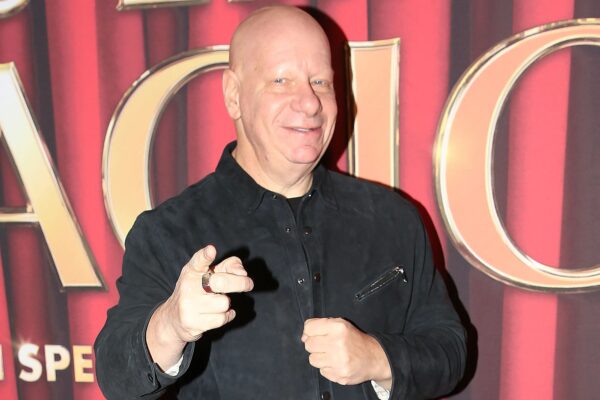
At America’s national parks in the Trump era, the arc of history bends toward revisionism
**HARPERS FERRY, W.Va. — Navigating History Amidst Political Pressure**
By the roiling rapids where the Shenandoah and Potomac rivers converge, Harpers Ferry National Historical Park stands as a silent witness to America’s complex past. Here, President Donald Trump’s campaign to promote a more uplifting narrative of American history faces its toughest challenge.
There is no positive spin to be put on slavery, and at this historic site, National Park Service employees grapple with how to present the truth in a climate of increasing political scrutiny.
**Balancing Truth and Political Directives**
Across the nation, federal storytellers are being asked to review interpretive materials at historical properties. The directive: remove or alter descriptions that “inappropriately disparage Americans past or living” or otherwise tarnish the American story.
This move aligns with President Trump’s criticisms of what he perceives as institutions focusing too heavily on “how bad slavery was.” Whether this effort is steering history toward sanitized revisionism remains to be seen. However, indications suggest that those tasked with this review are proceeding cautiously when reshaping America’s core narratives.
**A Descendant’s Plea to Preserve History**
Among those closely watching is Brianna Wheeler, a direct descendant of Dangerfield Newby, one of abolitionist John Brown’s raiders during the fateful 1859 assault on the U.S. armory at Harpers Ferry. The raid, bloody and contentious, helped set the stage for the Civil War.
Wheeler insists that the shame of slavery must never be ignored:
“You can’t wipe that,” she said. “You can’t erase that. It’s our obligation to not let that be erased.”
**On-the-Ground Revisions and Unchanged Narratives**
At some parks, staff have reported the removal of brochures containing the term “enslavers” for revision, with all materials undergoing rigorous review. Yet, in guided tours about Brown’s raid, the portrayal of slavery remains unflinching.
At Fort Pulaski National Monument near Savannah, Georgia, a powerful exhibit featuring an 1863 photograph of a lashed Black man with welts still commands a prominent place in the visitors center. Its caption states plainly: “The enforcement of the slave regime relied on violence.”
**Few Changes Seen So Far**
Despite the April deadline for parks to remove “inappropriate content” from public display, sweeping alterations have yet to materialize. In response, more than 80 Democratic lawmakers requested a full accounting of any such changes from the National Park Service chief.
The Sierra Club, which monitors national park changes, reports over 1,000 items flagged for review but has confirmed only one instance of signage removal — at Muir Woods National Monument in California. That alteration occurred during the Biden administration to better acknowledge Indigenous peoples’ violent displacement, enslavement by missionaries, and other injustices. Yellow sticky notes once supplemented existing signs to tell these fuller stories; those notes have now been removed following the update.
**Expanding the Review Beyond History**
The Interior Department’s order extends to nature parks, too, calling for the removal of material emphasizing topics “unrelated to the beauty, abundance, or grandeur” of these natural places. That includes references to climate change and human-caused environmental degradation.
At Acadia National Park in Maine, for example, 10 signs citing climate change have disappeared, according to Rep. Chellie Pingree (D-Maine). She protested in a letter to Interior Secretary Doug Burgum, stating:
“Our national parks are not billboards for propaganda. They are places where millions of people come each year to learn, reflect, and confront both the beauty and the difficult truths of our shared history.”
The Interior Department declined to confirm specifics of the review at Acadia, saying it is ongoing.
**Pressure on Smithsonian Museums**
The Smithsonian Institution museums, largely funded by the government, have also come under scrutiny. President Trump criticized exhibits he said focused excessively on “how horrible our Country is, how bad Slavery was,” and threatened to cut funding. However, the museums portray America’s extensive achievements in industry, science, culture, and war alongside the legacies of injustice.
**The Power of a Photograph**
Among the interpretive materials under review, a controversial 1863 photograph at Fort Pulaski of a whipped Black man stirred debate. The man had escaped a Louisiana plantation to enlist in the Union Army, and the image became one of the Civil War’s most stark representations of slavery’s brutality, as noted by the Smithsonian’s National Portrait Gallery.
A federal official involved in the review, speaking anonymously, said the photograph’s removal was a local decision. However, National Park Service spokesperson Elizabeth Peace stated:
“If any interpretive materials are found to have been removed or altered prematurely or in error, the Department will review the circumstances and take corrective action as appropriate. Our goal is accuracy and balance, not removal for its own sake.”
**Emphasizing a More Uplifting Narrative**
Under Interior Department guidance, historical parks are instructed to spotlight “solemn and uplifting public monuments” that remind Americans of the nation’s “extraordinary heritage,” “consistent progress toward becoming a more perfect Union,” and “unmatched record of advancing liberty, prosperity, and human flourishing.”
Nonetheless, the recent guided tour at Harpers Ferry told a far more layered story. John Brown was portrayed as a transformational but complex figure whose violent raid heightened Northern anti-slavery sentiment on the eve of the Civil War.
**John Brown: Hero or Flawed Figure?**
Whether John Brown is a hero is left deliberately to visitors to decide. Brown, a fierce abolitionist, had blood on his hands even before arriving at Harpers Ferry — his band had killed five pro-slavery men and boys in a violent conflict in Kansas.
Descendant Brianna Wheeler views Brown as heroic but human:
“Yes, he’s a hero because he gave up everything, including his life, for a monumental cause. But he’s not a superhero. He’s a flawed character.”
She stresses that the history of slavery and sacrifice must be acknowledged as a fundamental thread in the American tapestry — one that tells who bled and what truly made America.
**Conclusion**
Harpers Ferry stands as a powerful symbol of a nation’s ongoing struggle to confront its past honestly, balancing the desire to uplift with the necessity of truth. The story of John Brown, his raiders, and the countless enslaved people remain vital to understanding America’s complex history — flaws and all.
—
*Associated Press writers Russ Bynum, Matthew Daly, and Dorany Pineda contributed to this report.*
https://wgntv.com/news/national/ap-us-news/ap-at-americas-national-parks-in-the-trump-era-the-arc-of-history-bends-toward-revisionism/
You may also like
推荐阅读
You may be interested
Guns and butter: Russia chooses both
A required part of this site couldn’t load. This may...
Saudi Arabia & Pakistan Ink Defence Agreement Stating ‘Attack On Either Will Be Considered Attack On Both’
**Saudi Arabia and Pakistan Sign Strategic Mutual Defence Agreement** *Riyadh:*...
Congress Leader Rahul Gandhi Says He’s ‘Getting Help From Inside ECI’ To Expose Alleged Vote Fraud – Video
New Delhi: Congress leader Rahul Gandhi has alleged that he...
 The New York Times
The New York Times
- CVS Worker Fatally Stabbed on Christmas Day on Long Island 2025 年 12 月 26 日 Jenny Gross and Michael Levenson
- Downpours Ease in Southern California, but Flood Risks Remain 2025 年 12 月 26 日 Jacey Fortin and Dan Watson
- Michal Urbaniak, Pioneering Jazz Fusion Violinist, Dies at 82 2025 年 12 月 26 日 Alex Williams
- Trump’s Claims About Nigeria Strike Belie a Complex Situation on the Ground 2025 年 12 月 26 日 Ruth Maclean, Saikou Jammeh and Ismail Auwal
- 8 Killed in Syria Mosque Blast, Government Says 2025 年 12 月 26 日 Abdi Latif Dahir and Hussam Hammoud
- New York City Braces for Heavy Snow as Winter Storm Approaches 2025 年 12 月 26 日 Eliza Shapiro
- 2 Killed in Vehicle Ramming and Stabbing in Israel, Officials Say 2025 年 12 月 26 日 Adam Rasgon and Johnatan Reiss
- What to Know About U.S. Military Action in Nigeria 2025 年 12 月 26 日 The New York Times
- Sick of Trump News? I’m Here for You. 2025 年 12 月 26 日 David Brooks
- Trump Is Getting Weaker, and the Resistance Is Getting Stronger 2025 年 12 月 26 日 Michelle Goldberg



Leave a Reply